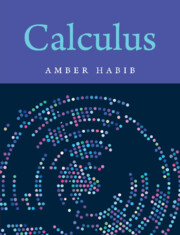Book contents
Summary
In calculus, we mainly study continuous change. However, there are situations where discrete changes have to be considered. For example, when we try to describe a number such as _ by its decimal representation, we actually create an iterative process of successively better approximations: 3, 3.1, 3.14, 3.141, 3.1415, 3.14159, and so on. A similar situation arises when we work with the Taylor polynomials of a function— we successively approximate a function by polynomials of increasing degree. What is common to the two examples is that there is a first stage, a second stage, a third stage, and we are interested in what happens as we keep going. Clearly, we need to develop a theory of limits for this context.We shall do so in this chapter. Further, we shall work out in detail the situation when discrete changes accumulate and we are interested in the total. This will have many similarities as well as a direct relation with integration.
As an example, let us consider a geometry problem that leads to an iterative method for approximating square roots by fractions. It is named Heron's method after a Greek mathematician, but the evidence is strong that this kind of reasoning was carried out earlier in ancient Iraq and India, three to four thousand years ago. The statement of the problem is: “Given a rectangle, construct a square with the same area.” Now, if the rectangle has sides a and b, the square needs to have side √ab. To us, this may be a triviality, but what if the only numbers you know are the fractions? Then the problem will, in general, have only approximate solutions. How do we find good fractional approximations to √ab? Consider the following steps.
The final square is obviously a bit too big. Nevertheless, its side of (a + b)/2 is visibly better than the initial sides of a and b. If we have ab = N, we can repeat the process with a rectangle whose sides are a = (a + b)/2 and b0 = N/a. This will lead to a new and further improved square with side (a + b)/2.
- Type
- Chapter
- Information
- Calculus , pp. 265 - 306Publisher: Cambridge University PressPrint publication year: 2023



